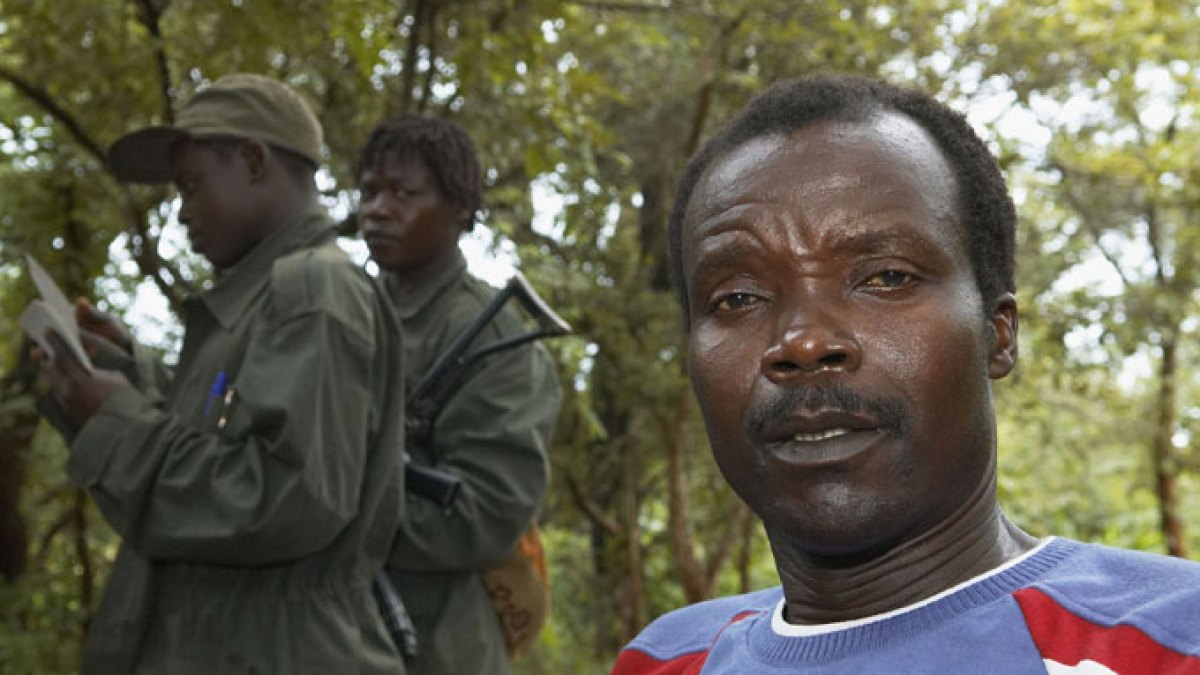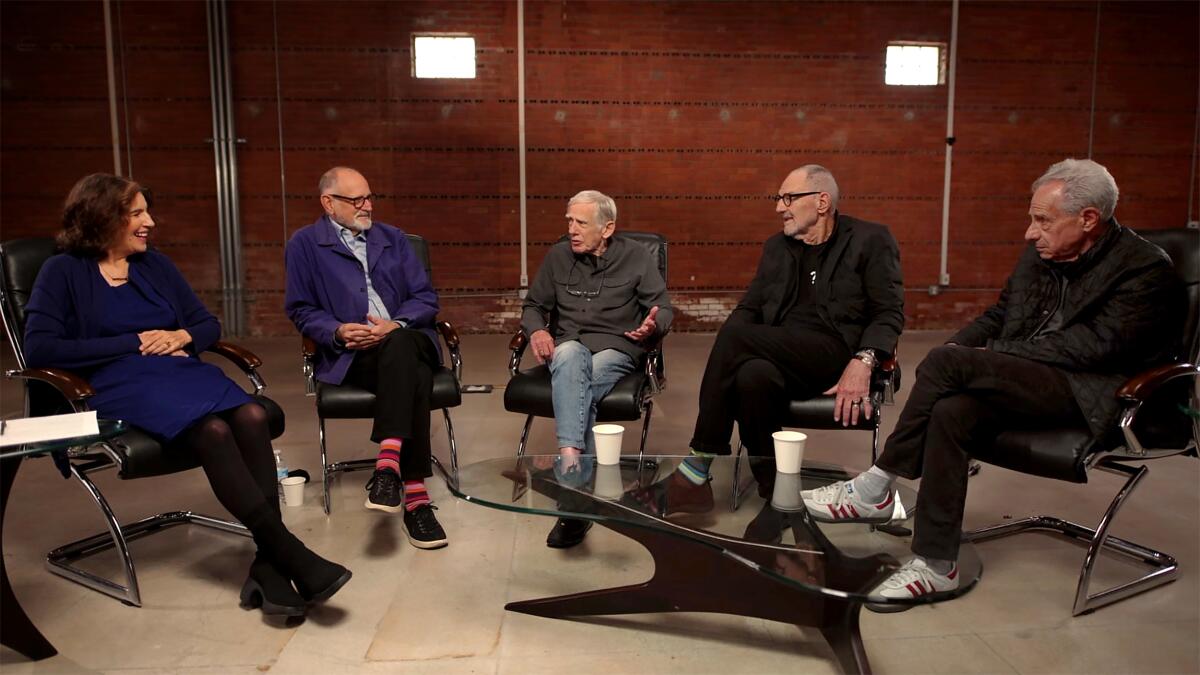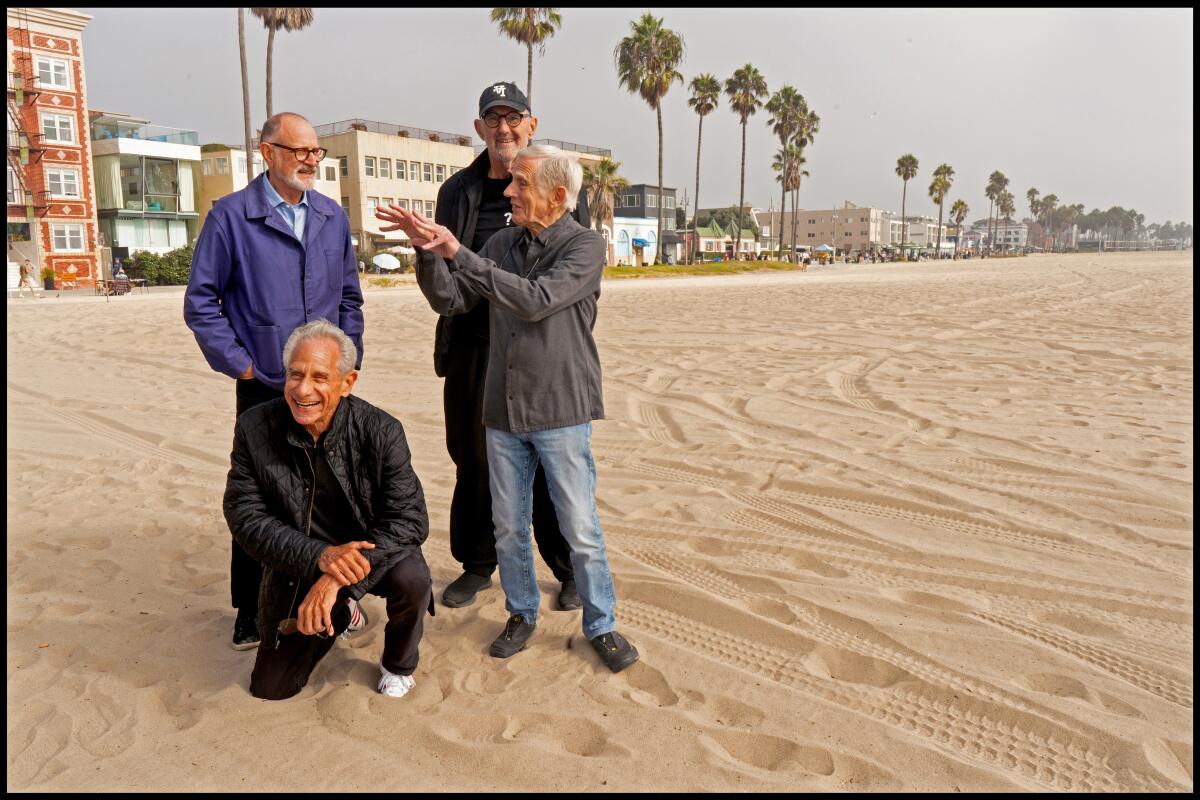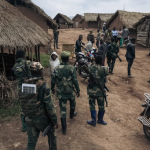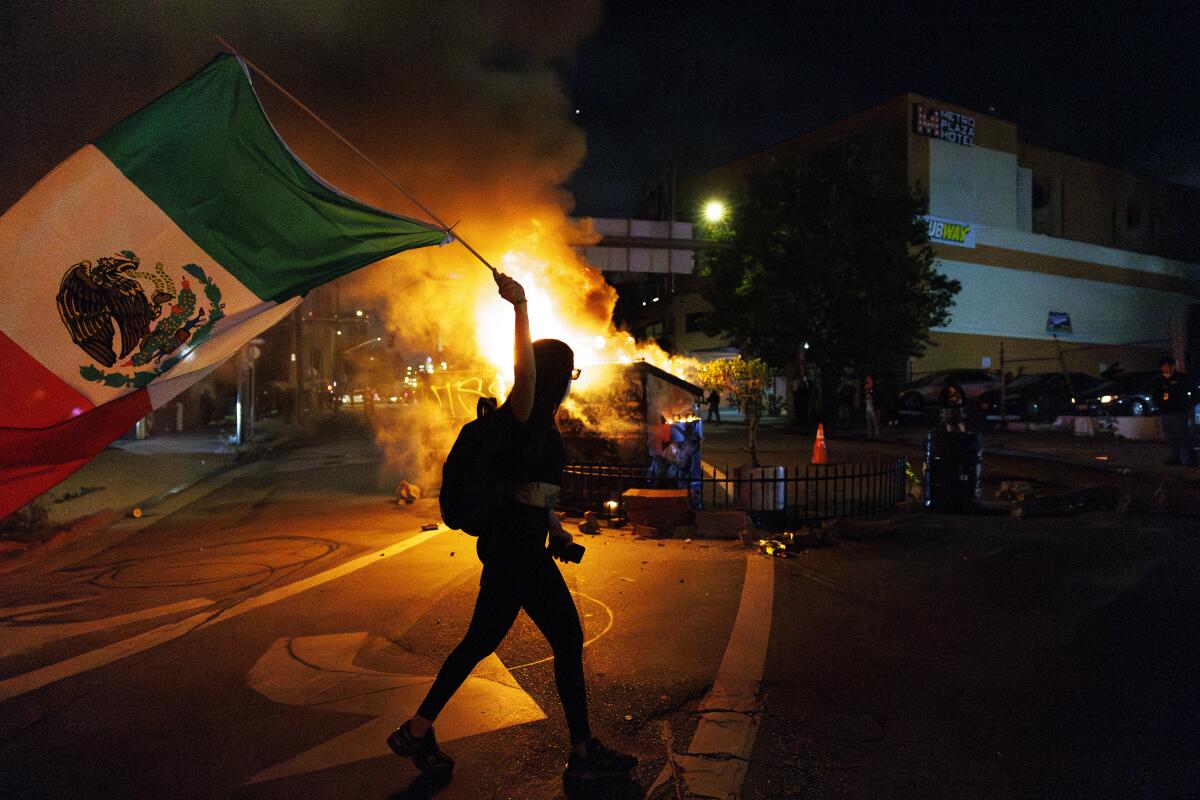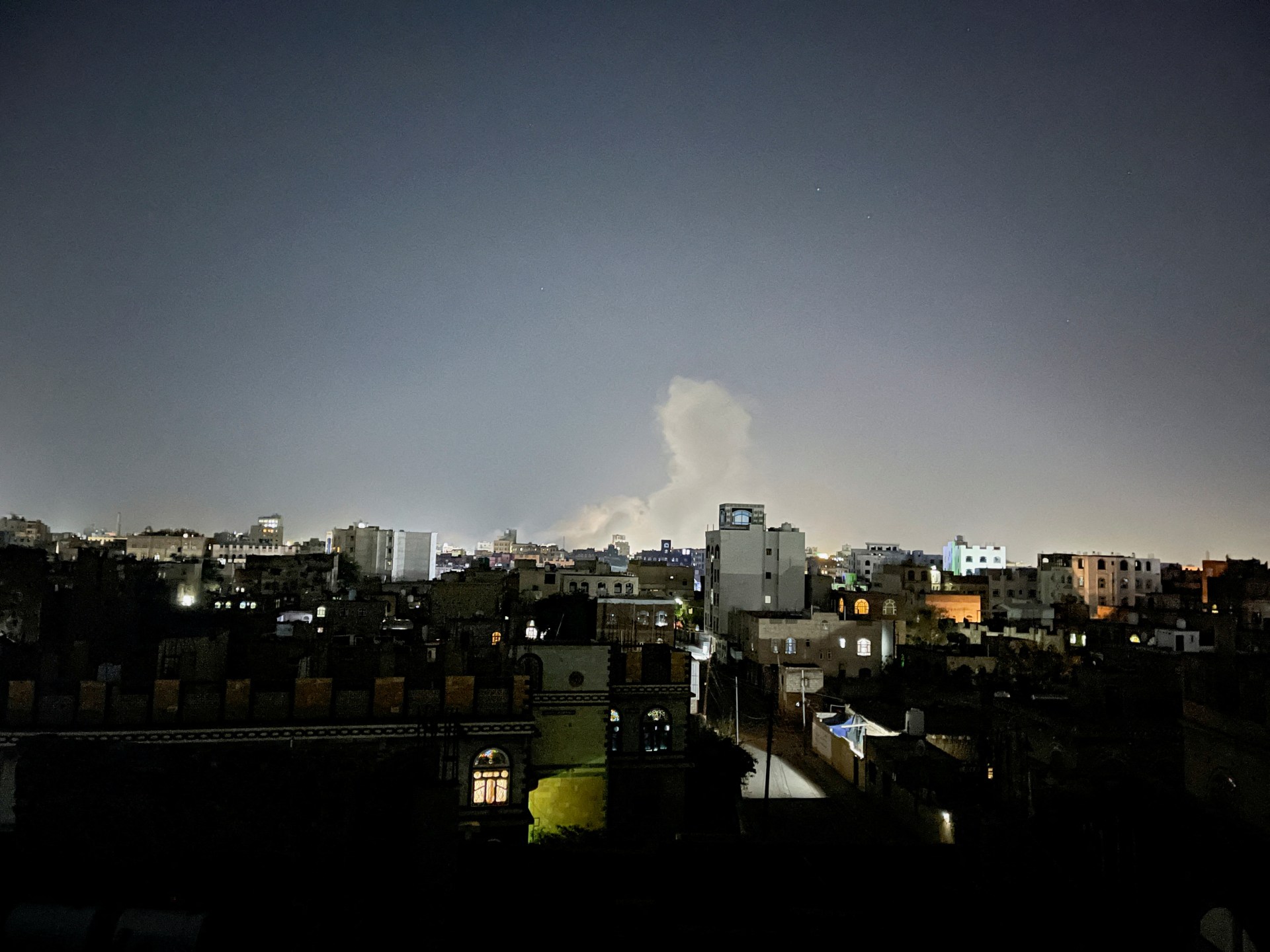The rebel cheesemaker’s restaurant in a Puglia forest
Cheese is the star at one of the world’s most enchanting restaurants in a Puglia forest. Plus, cold noodles to obsess over … how fish sauce caramel transforms instant noodles … the sexy steak videos transforming an Armenian meat shop … losing Birdie G’s pickle chicken … 6-to-1 grocery shopping … and an Angeleno’s connection to Mexican Chicago. I’m Laurie Ochoa, general manager of L.A. Times Food, with this week’s Tasting Notes.
Slinging the blues

Cheesemaker Vito Dicecca, who built Baby Dicecca, a cheese bar in the Mercadante forest close to Altamura in Puglia, Italy.
(Laurie Ochoa / Los Angeles Times)
It’s been more than 15 years since I stumbled into Caseificio Dicecca, the shop of the famed cheesemaking Dicecca family in the Puglia city of Altamura, and bit into a round of freshly made burrata, the rich, oozing cream still warm. No burrata I’ve had since has equaled that first bite.
I had come to the region with chef Nancy Silverton, who was poking her head into the doors of the city’s many bakeries, sampling focaccia and the local bread that has a tradition so old the ancient Roman poet Horace called Altamura’s crusty loaves “by far the best bread to be had.”
Burrata is a much younger food. It wasn’t established in the region until the 1920s and Caseificio Dicecca is just one of several family-run operations in the area making the cheese that is now ubiquitous around the world — thanks in part to Silverton, who first started serving burrata in the 1990s at L.A.’s Campanile before she later opened her many Mozza restaurants.
The phenomenon got so out of hand that a burrata backlash was sparked, led by author Jeff Gordinier‘s 2019 Esquire story titled “F*** Your Burrata,” in which he argued that the appearance of the cheese on a menu “is like a billboard announcing, ‘The chef at this place has never had an original idea in his life …’”
Meanwhile, burrata sales continue to grow, with one estimate valuing the global market at more than $2 billion this year.
Last week, I returned to Puglia with Silverton, this time with author Alec Lobrano and several food-obsessed travelers. Silverton, who is a fan of Gordinier’s writing, read parts of his story aloud to the group even as she extolled her love for the maligned cheese. Especially when it is made by expert cheesemakers like the Diceccas.
And no one would ever accuse the Dicecca family of being unoriginal.
The cheese operation is now in the hands of five siblings — Vito, Paolo, Angelo, Vittoria and Maristella — who are the fourth generation to run the caseificio. At various points, the siblings left Altamura to travel the world and, in some cases, make cheese in places far away from Italy. But Altamura is their lodestar and several years back Vito Dicecca, who spent time in Japan, Thailand, Mexico, Australia and even lived for a bit in Southern California, not only brought back new cheesemaking ideas (the siblings make more than 300 varieties) he created one of the world’s most enchanting restaurants in the Mercadante Forest not far from Altamura.
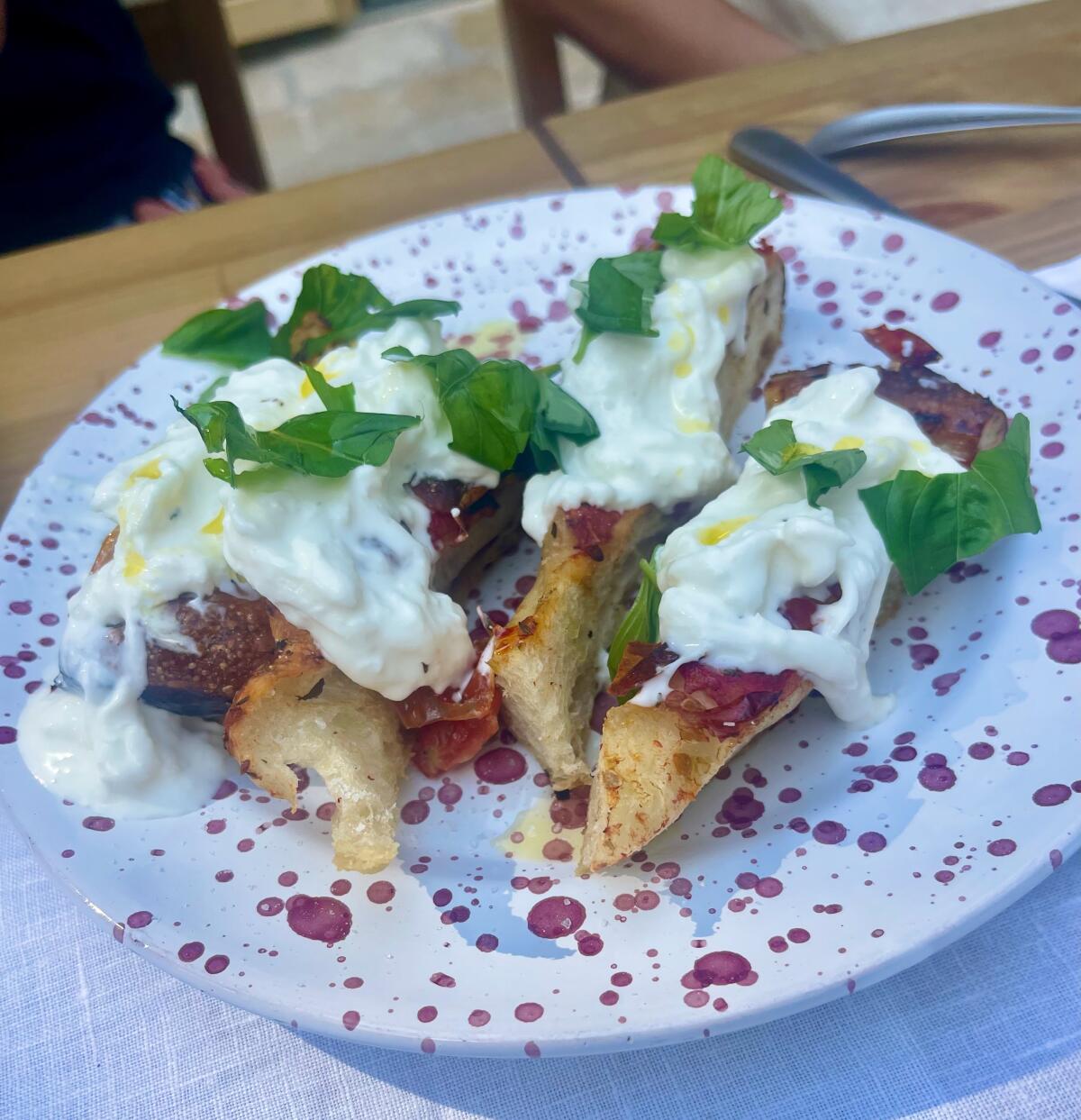
Focaccia with fresh stracciatella at Baby Dicecca in Puglia’s Mercadante Forest.
(Laurie Ochoa / Los Angeles Times)
You may have seen an earlier version of the restaurant — which then was more of a kiosk — in the Puglia episode of Stanley Tucci‘s CNN series “Searching for Italy.” A few months ago, Vito Dicecca relocated and expanded his restaurant, Baby Dicecca, but it is still a very simple spot where the majority of diners eat outside surrounded by the trees of the forest.
“Proudly, we serve mostly cheese and some vegetables from our friends close to here,” Dicecca said as he welcomed the group. Even his wines are usually made by friends of his, he explained, as he poured “a natural, biodynamic sparkling wine” made with the Puglian Marasco grape from the producer L’Archetipo.
“I don’t buy the brand,” he said. “I like the people and then I’ll like the wine.”
What followed was a cheese lover’s feast, including focaccia draped in fresh, almost liquid stracciatella (or the “heart of mozzarella” as Dicecca put it on the menu) and “calzoncello alla Vito,” a handmade type of raviolo sauced with mozzarella whey and topped with a fresh grating of the aged cheese the family calls Dicecca Gold. To break up the richness, there was an heirloom tomato salad plus Vito’s take on a Caesar salad with seasonal greens mixed with fennel and celery plus a bit of honey and aged Pecorino. It may not have been a true Caesar, but it was delicious.
At one point Dicecca broke out a charcoal-colored loaf of bread made with grano arso, the burnt flour that also is used in some of the region’s pastas. He sliced the bread, drizzled it with local olive oil and then took a bundle of dried, wild oregano grown in the forest nearby and shook some of it on top of the slices.
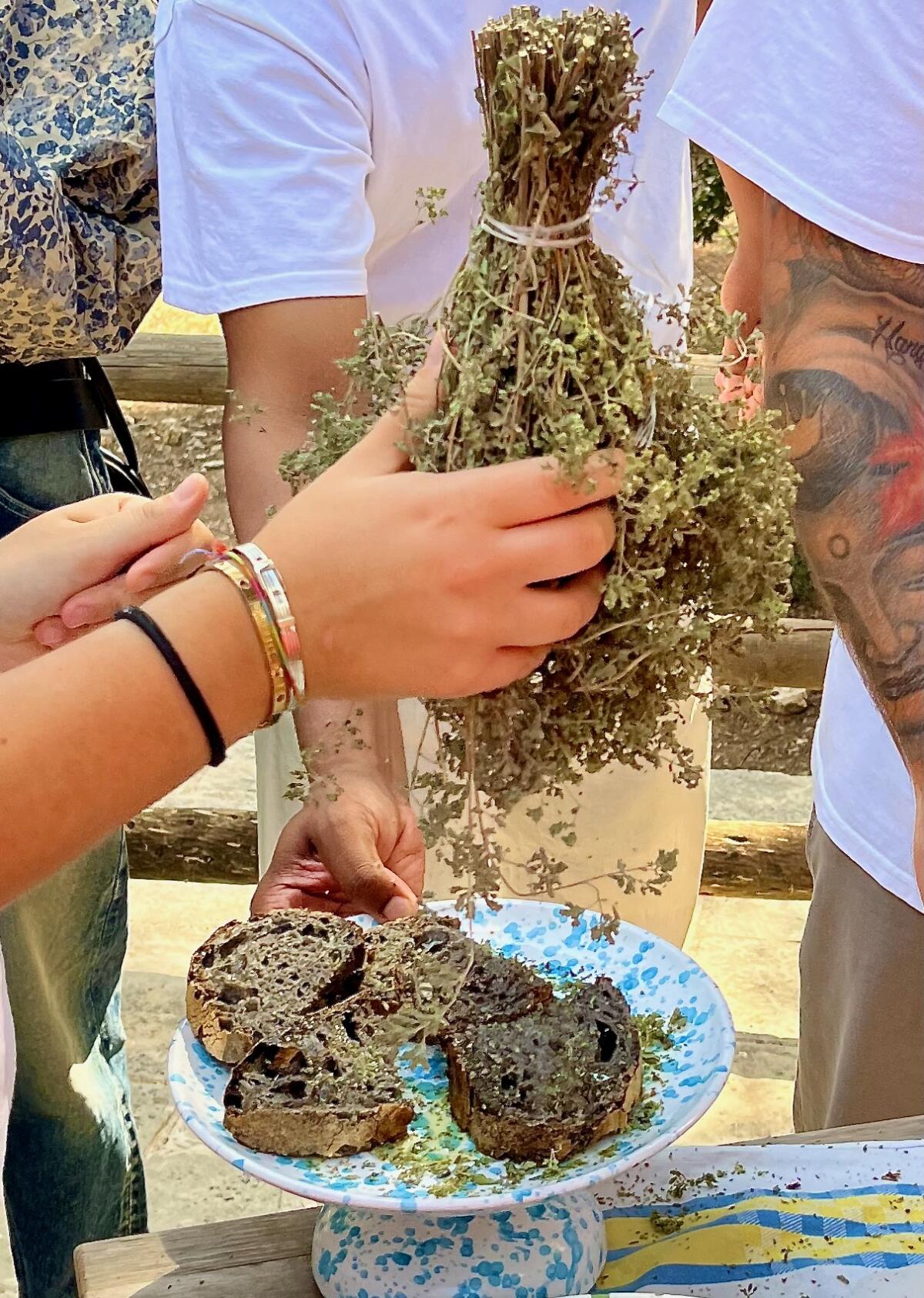
Wild oregano is shaken on olive-oil-drizzled slices of bread made with grano arso, or burnt flour, at Baby Dicecca, a restaurant in Puglia, Italy.
(Laurie Ochoa / Los Angeles Times)
Dessert was two kinds of gelato, including one with goat’s milk, oregano and honey, made on the spot by Dicecca’s friend — “a genius” — Maurizio Bonina.
But the climax of the meal was, of course, cheese. And it wasn’t burrata.
Amore Primitivo is Vito Dicecco’s fever dream of a cheese, a blue, aged variety that is soaked in local Primitivo wine for 100 days, turning the exterior deep purple. He places the whole cheese on a cake stand and then loads the top with macerated cherries. Once the group admires the cheese’s beauty, he slices and serves it atop guests’ hands like a caviar bump.
Only when you taste the cheese and its beautifully mellow funk does it become clear that this is not just a cheese for Instagram. This aged blue created in the land of fresh mozzarella exemplifies the best of the Italian spirit — a healthy respect for tradition infused with a risk taker’s desire for innovation.
“For the first three years, I didn’t sell one piece,” Dicecca told us. “My family was very mad at me. Friends of my dad, they said to him, ‘Tell your son, this is not a pastry shop, it’s a cheese shop.’”
For a time, he added, “I pretended to sell the cheese — I was giving it as a gift to friends. But now it’s one of the best sellers.”
These days, Caseificio Dicecca is almost as well known for its blue cheeses as it is for its fresh burrata and pasta filata family of stretched curd cheeses. They’ve experimented with more than 60 types of blue, including an ultra aged cheese, golden yellow on the inside, that Vito Dicecco named Surfing Blu. Who knows what he’ll think of next?
Baby Dicecca cheese bar is open from May through October.
Sexy steaks
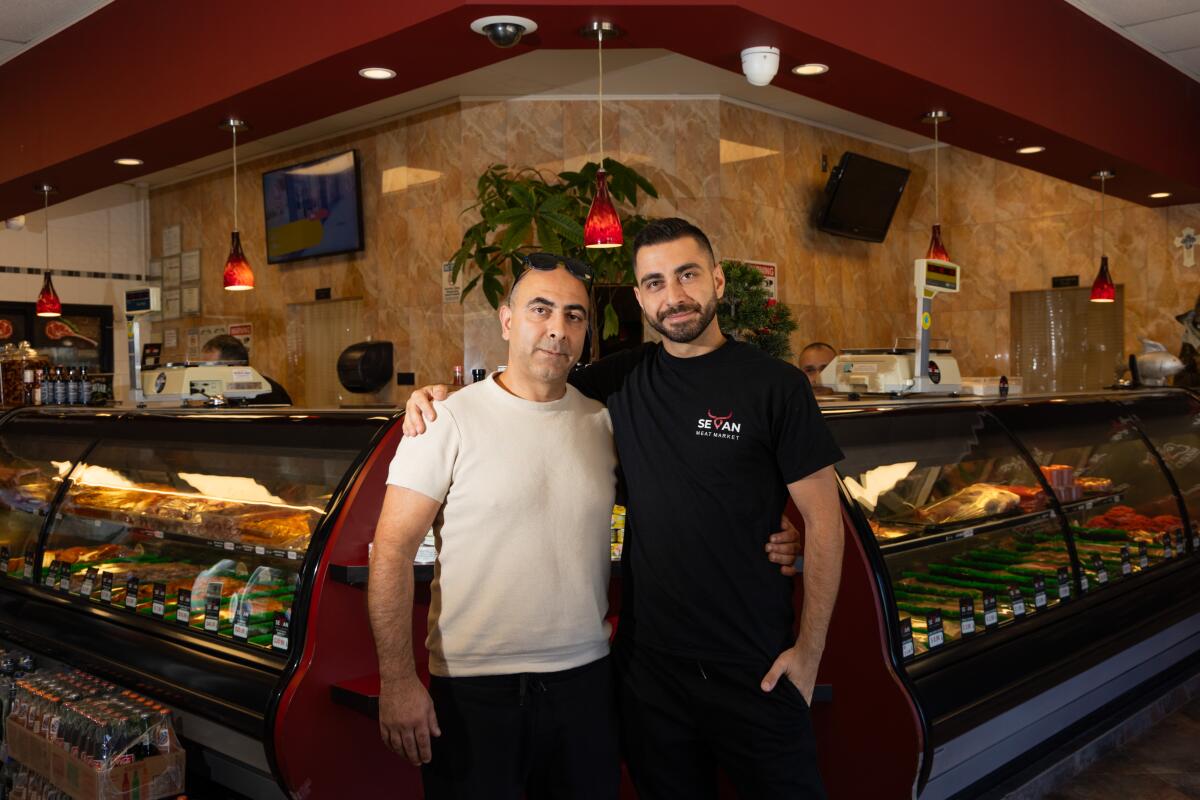
Sevan Meat Market manager Norvan Simonian, right, and co-owner Serop Marukyan.
(Juliana Yamada / Los Angeles Times)
More generational innovation, this time closer to home, as our favorite Grocery Goblin Vanessa Anderson reports in her latest dispatch on the social media ideas transforming an Armenian meat shop: “Sevan Meat Market’s social media videos — conceived by owner Hrach Marukyan, his son Serop and manager Norvan Simonian — tell an Armenian American story built on beef, a story of the old and new, of adaptation to a rapidly changing world. And their growing audience of now nearly 60,000 Instagram followers is eagerly tuning in.”
In a pickle
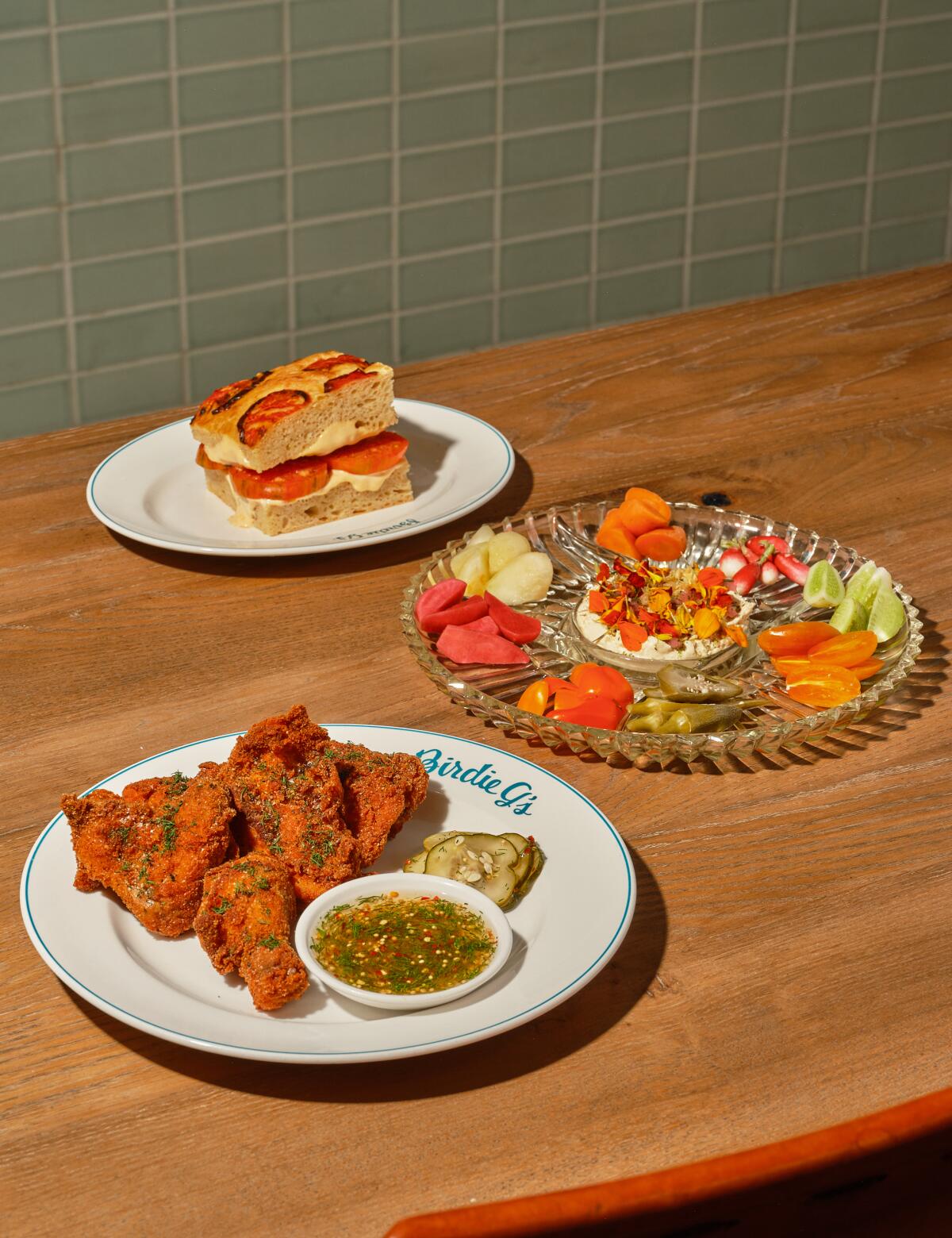
The “pickle chick” cutlet, front, plus the relish tray and knife-and-fork tomato sandwich at Jeremy Fox’s Birdie G’s, which will close in December.
(Shelby Moore / For The Times)
Last month, when I was at Birdie G’s in Santa Monica for a family get-together — and a taste of the restaurant’s famed “pickle chick” fried chicken cutlet — the place was packed, with the crowded valet station just one indication that this was a place people wanted to be. It seemed that chef and partner Jeremy Fox‘s vision for a chef’s take on a chain restaurant was ready to spread to other locations.
But as Fox told Food’s Stephanie Breijo this week, business has been inconsistent since the Palisades fire in January. “One month the sprawling restaurant’s seats would all be filled,” wrote Breijo, “the following, sales would drop by 40%.” And in the days right after the fire, Fox estimated that the restaurant’s revenue fell by 80%.
“That was a bloodbath,” Fox told Breijo, explaining his decision to close the restaurant on Dec. 31.
Until the end of the year, Fox and Birdie G’s co-owners, Josh Loeb and Zoe Nathan, owners of the Rustic Canyon Family restaurant group, are planning more daily specials, ambitious large-format dishes, guest chefs and “one final run,” Breijo writes, “of the restaurant’s fan-favorite Hanukkah series, 8 Nights.”
“What’s the worst that could happen,” Fox said, “we go out of business?”
The great holiday cookie bake-off returns

(Leslie Grow / For the Times)
Here at L.A. Times Food we decided it had been too long since our last Los Angeles Times Holiday Cookie Bake-Off — a tradition that began in 2010 and allowed us to connect with you, our readers, and your recipes. As Deputy Food Editor Betty Hallock wrote in our recipe call, we are accepting recipe submissions until Monday, Oct. 13. If you’ve got a great holiday cookie recipe we want to hear from you.
Noodle cool-down
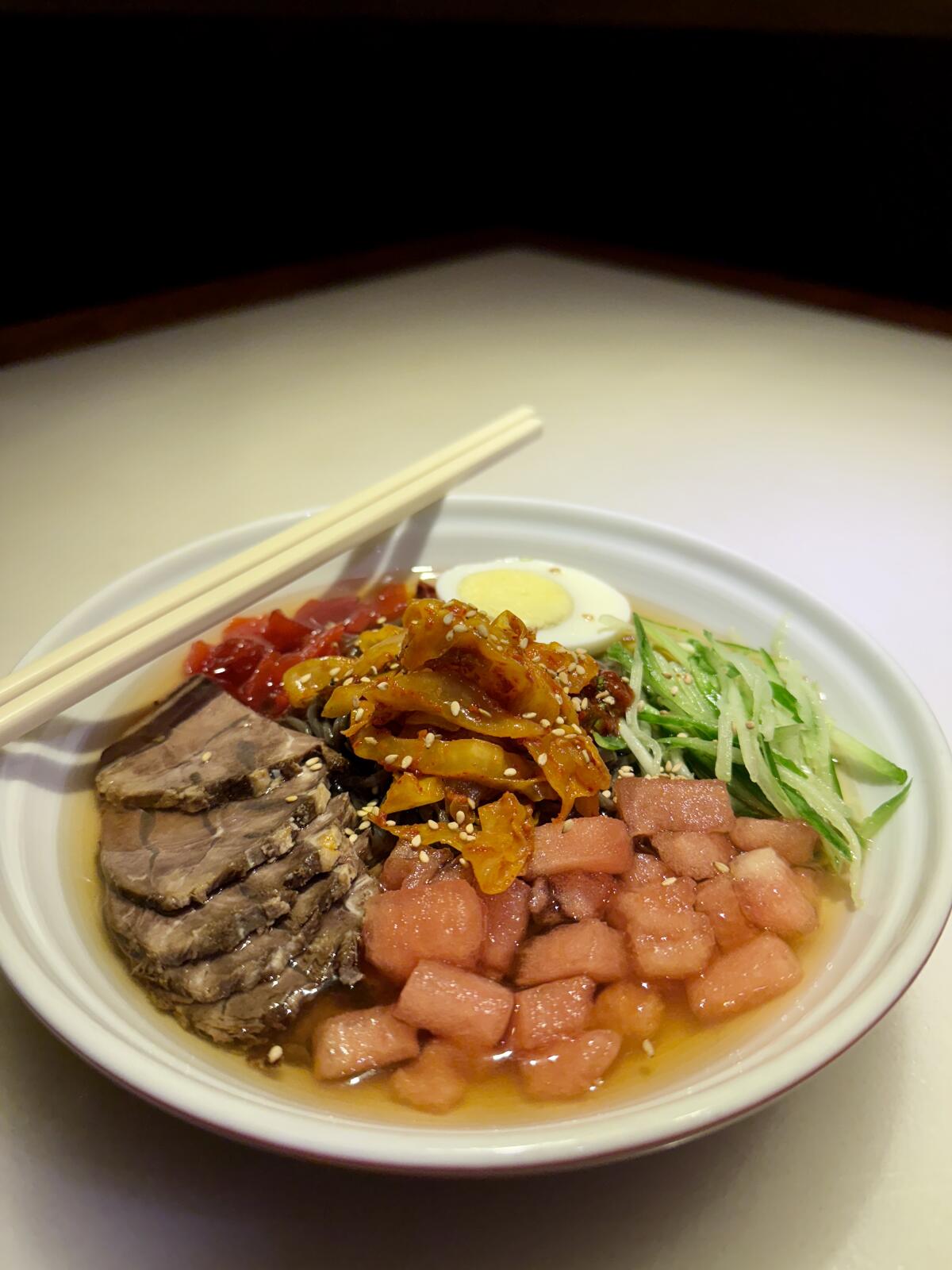
A bowl of Beijing Yanji cold noodles from Bistro Na’s restaurant in Temple City.
(Jenn Harris / Los Angeles Times )
Columnist Jenn Harris’ latest obsession is Bistro Na’s Beijing Yanji cold noodles. “It’s a tangle of buckwheat noodles in an ice-cold broth,” she writes, “with sliced beef shank, beef tongue, kimchi, watermelon, boiled egg, shredded cucumber, pickled radish and chile sauce all arranged over the top like a color wheel.” I think I need to return to the Temple City restaurant very soon for a bowl of my own.
Mexican as Chicago
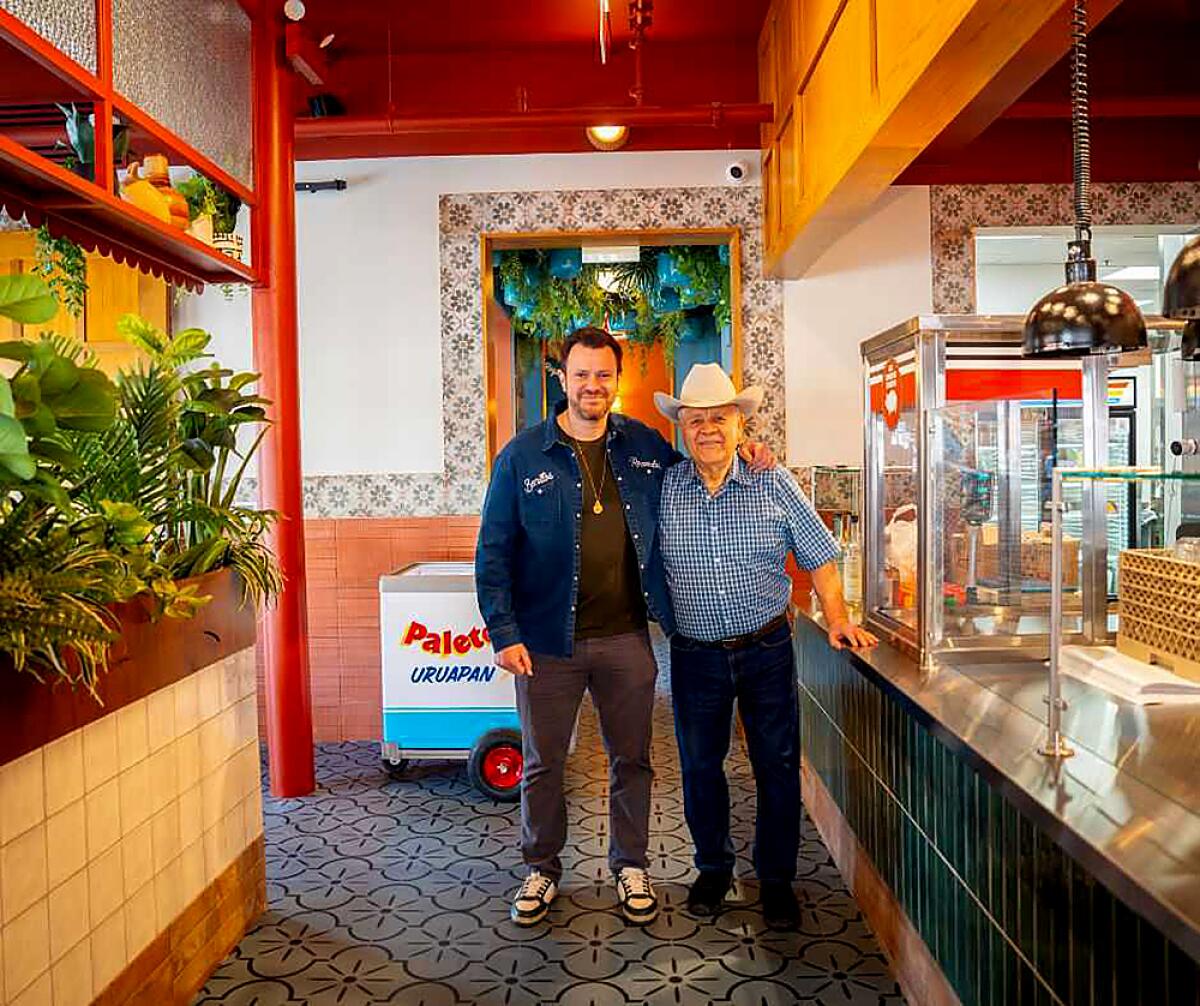
Marcos Carbajal, left, and his father Inocencio Carbajal at their Little Village location of Carnitas Uruapan in Chicago.
(Carnitas Uruapan)
With so much of the Trump administration’s focus on Chicago, Food Editor Daniel Hernandez wrote about the city’s deeply established Mexican roots as seen in its restaurants from the perspective of a visiting Angeleno: “Los Angeles may have more Mexican residents in total numbers, but in terms of who makes up each city’s Latino population, Chicago is as Mexican as Los Angeles.”
Instant classic

Holy Basil’s chef and owner Deau Arpapornnopprat holds his ‘Yum Mama’ Instant Noodle Salad With Lime And Fish Sauce Caramel in the Times Test Kitchen.
(Juliana Yamada / Los Angeles Times)
Have you ever made fish sauce caramel? It could become your next kitchen essential. For our most recent “Chef That!” cooking video, Deau Arpapornnopparat, chef-owner of the Thai restaurants Holy Basil, came to the Times Test Kitchen to show us how he elevates instant noodles with easy-to-make fish sauce caramel and more toppings. As Deputy Food Editor Betty Hallock wrote, the “dressing is classically sweet, sour, salty and spicy all at once.” Find the recipe here.
Curtis Stone’s ‘Field Trip’
To cap off the weekend of The Times’ Food Bowl Night Market, presented by Square, we’ve added a free Sunday evening screening, reception and conversation on Oct. 12 featuring L.A. chef Curtis Stone with Michelin-starred chef Vicky Cheng of the acclaimed Hong Kong restaurants Wing and VEA. I’ll be talking with Stone and Cheng about the Hong Kong episode of “Field Trip With Curtis Stone” and more. It takes place at the Fowler Museum at UCLA. To sign up for free tickets, click here.
And although VIP tickets (allowing early entry) to The Times’ Food Bowl Night Market are sold out, general admission tickets remain for the two-night event taking place Oct. 10-11 at City Market Social House in downtown L.A. More than 40 restaurants are participating, including Holbox, Baroo, the Brothers Sushi, OyBar, Heritage Barbecue, Crudo e Nudo, Hummingbird Ceviche House, Rossoblu, Perilla L.A., Evil Cooks, Villa’s Tacos, Holy Basil and Luv2Eat Thai Bistro. Check lafoodbowl.com for tickets and info.
Newsletter
You’re reading Tasting Notes
Our L.A. Times restaurant experts share insights and off-the-cuff takes on where they’re eating right now.
You may occasionally receive promotional content from the Los Angeles Times.
Also …
Newsletter
Eat your way across L.A.
Like what you’re reading? Sign up to get it in your inbox every week.
You may occasionally receive promotional content from the Los Angeles Times.


